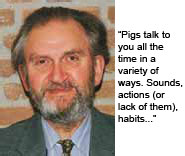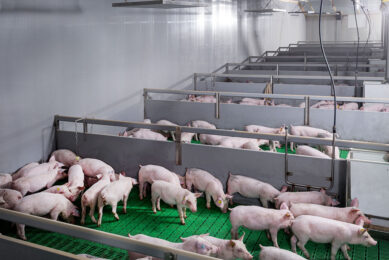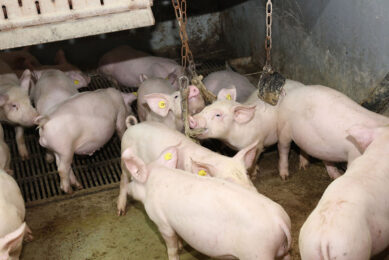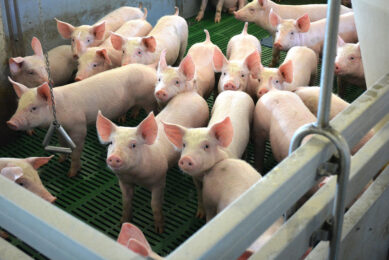What the textbooks don’t tell you about… Stress

Due to a praiseworthy increase in productivity, we are increasingly stressing our pigs. I am not entering into the welfare debate about this, but as I shall show in my next column, stress is now costing us a lot of money.The textbooks I have on my shelves do not cover the subject adequately enough for the ordinary producer – and some textbooks not at all. The language in those that do, while scientifically correct, is usually too difficult for many of us to grasp at once as it is a complex subject, so is just not read, let alone understood. At the risk of being over-simplistic, I will attempt to explain what the producer needs to know about the subject and thus encourage him to take the required action.
Stress or strain?
Both! Everyone talks about ‘stress’ but it is not the same as strain.
Stress: The conditions (stressors) affecting the well-being, mental and physiological, of the pig.
Strain: Not the same as stress. Strain is the effect on the pig of the various stressors – and there are many of them. The scientist defines strain as ‘the critical manifestation of stress’. Stress creates strain in the pig and some pigs – like humans – are better at coping with it than others. At the risk of oversimplification, stress are factors outside the pig which create strain inside it.
Is this just semantics/ hair-splitting? No, because when carrying out a periodic stress audit every three months or so – as every manager should – we need to distinguish between the two and recognise the factors which could be/ are causing signs of strain in the pig and take steps to alleviate them.
As I’ve said before, “Pigs talk to you all the time in a variety of ways.” Sounds, actions (or lack of them), habits, vices and reaction/ perception to change (or otherwise).
Stimulation
Stimulation? That’s a beneficial word – what has that got to do with the other two which are just the opposite? Because farmers confuse stimulation with strain.
Stimulation (of appetite, sex, rooting and exploring behaviour, boar presence and piglet suckling) all these and more are natural and essential processes towards better performance.For example, that awful din created by gilts approaching puberty – is that anticipatory excitement, or as I find all too often, their protest at overcrowded conditions encouraging bullying? Again – growing pigs – that painful peak-decibel clamour before feeding! Is it joyful anticipation of food arriving or a protest about recurring hunger which has been normal for too long? The sound is different. Away from feeding time the vocalisation of the feeling of hunger – lower register and more mute, is different from the higher, more urgent sound of thirst. Quite a few times when walking through a barn with the attendants they have remarked, “They are a bit hungry – we haven’t fed them yet.”“No,” I replied, “that is the thirst sound; go in and check the drinkers.”
Time for a bit of science
Different types of stressors cause different types of physiological (within the body) reactions, but they all show similar biological measures separated into two main categories (Table 1).The brain responds to these strain stimuli by either sending signals down the autonomic nervous system, ANS (autonomic – not subject to the body’s control) to certain hormones. Alternatively, it releases different hormones through the neuro-endocrine system, NES. It reacts within milliseconds – one of the wonders of nature.
What does the ANS do?
When the stressor presents a sudden threat, the brain responds by increasing the availability of energy, raises the heart and respiratory rates and puts digestion on hold.
The pig can then either fight or flee. Once the threat is deemed to be over, the activating hormones quickly disappear.
What does the NES do?
If the pig thinks it can respond positively to the situation, the brain activates the NES.
The serious aspect of NES activation is that its set of hormones affect organs in the body which, over a much longer period of time, deal with growth, especially protein (meat) formation, the body’s immune system and those metabolic pathways which control reproduction. The pig deals with these strains by reducing productivity – a form of metabolic`easing off` so as to more easily cope with the threat.
These are the most important strain effects caused by stress and why the two terms, stress and strain, need to be different.
Understand stress, strain, ANS and NES and you are well on the way towards reducing the losses from ‘stress’, as you will see next month. Yes, pigs are indeed like humans! Recognise the signs of stress in yourself?











